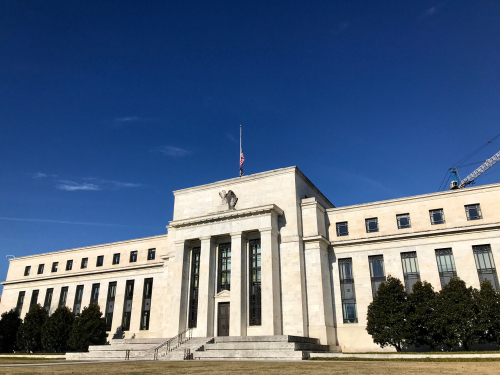
Equities | Europe | FX | Global | Monetary Policy & Inflation

Equities | Europe | FX | Global | Monetary Policy & Inflation
US equities bounced back. The S&P500 has risen around 8% from its start-of-month lows. 3pp of this move came on Friday. Of the assets we look at, Alphabet (+2.7 std-devs) gained most on a risk adjusted basis. While both Chair Powell and St Louis Fed President James Bullard appeared more optimistic on the outlook of the US economy, it feels somewhat like the market is pricing in the opposite, and with it, less need for CB tightening and a generic bid in asset prices. Our model-based recession probability rose to above 50%.
This article is only available to Macro Hive subscribers. Sign-up to receive world-class macro analysis with a daily curated newsletter, podcast, original content from award-winning researchers, cross market strategy, equity insights, trade ideas, crypto flow frameworks, academic paper summaries, explanation and analysis of market-moving events, community investor chat room, and more.
We standardise WoW price changes across different markets to allow for cross-market comparisons.
US equities bounced back. The S&P500 has risen around 8% from its start-of-month lows. 3pp of this move came on Friday. Of the assets we look at, Alphabet (+2.7 std-devs) gained most on a risk adjusted basis. While both Chair Powell and St Louis Fed President James Bullard appeared more optimistic on the outlook of the US economy, it feels somewhat like the market is pricing in the opposite, and with it, less need for CB tightening and a generic bid in asset prices. Our model-based recession probability rose to above 50%. Meanwhile, into the start of this week, bonds are weakening, while equities gain. This may, in part, be on the back of rebalancing flows into Q1. By our analysis the beneficiary of this into the end of the month should be US equities, at the cost of US bonds. Within US equities John favours being overweight clean energy and moved communications to marketweight.
US HY and commodity currencies found support, after recent losses. On rates, the Australia two-year swap (-2.8 std-devs) moved most while UK, German, Japan, and US 2Y yields saw larger moves than their 10Y counterparts lower, relative to the past year. The Norwegian 2Y swap was an outlier, on the back of a 50bps hike from Norges Bank. We remain short US (real), Japan, and German rates and think market pricing of the Fed terminal rate remains too low.
Commodities are one of the big losers right now on the recession trade. The Bloomberg Commodities Index is now down 12% from its June high, while copper and soy (-1.9 std-devs) saw the largest risk-adjusted moves over the past week.
Attention turns to the ECB’s Sintra Forum – a forum on central banking – and European CPI numbers. The forum starts today and finishes Wednesday; Henry expects ECB comments to focus on the separation of defragmentation from normalization (attempting to justify keeping spreads capped while hiking rates). It will also be important for the Fed and BoE watchers; the Fed’s Jerome Powell and Loretta Mester, and the BoE’s Andrew Bailey and Sir Jon Cunliffe are all due to speak. Meanwhile, the CPI numbers come on a backdrop of reduced market central bank hawkishness. While their implications for medium-term inflation projections are limited (the September projections are the key here for future hawkishness) they could still strongly affect market pricing, and hence equity and bond market moves. Markets are expecting a continued rise in the YoY number, which may be supported ahead by gas price rises, but further out we see the risk of recession capping ECB hiking capacity. The Riksbank are the only central bank announcing their policy this week. Surveys suggest a 50bp move is likely while the market remains undecided between a 50bp and 75bp move – we favour 50bps. For a full breakdown of the week ahead, read Henry’s views on the week ahead.

Spring sale - Prime Membership only £3 for 3 months! Get trade ideas and macro insights now
Your subscription has been successfully canceled.
Discount Applied - Your subscription has now updated with Coupon and from next payment Discount will be applied.